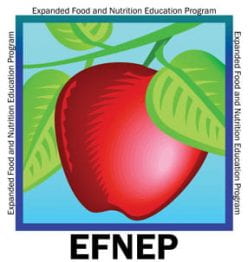Single person households have been on the rise for decades. According to the United States Census Bureau, in 1969, the number of one-person households was 16.7%. By 1979, it jumped to 22.2%, and in 2019 it had increased to 28.4%. These statistics include adults of all ages, and the trend is worldwide: in 2012 in Stockholm, Sweden, 60% of households consisted of one person!
Even some people not living alone find themselves in a situation where they are cooking dinner for themselves: if you’re living with roommates who don’t share food/cooking responsibilities; or if you have partners or spouses that work late, and teens who are busy with sports after school, both of whom may choose to eat away from home.
So, if you find yourself cooking for one, you are not alone.
Benefits and Barriers
The biggest benefit of cooking for yourself is that you can choose to cook what YOU like, without anyone else’s tastes to worry about. Want banana in with your whole wheat pasta? Go for it, no one is there to yuck your yum.
The barrier reported most often is that it feels like too much work. Planning a meal, shopping for ingredients, taking the time to cook—especially if you’re lacking in the cooking skills area or just don’t enjoy it—and then the clean up involved? It’s no wonder some people are just not inspired.
But we know that eating out all the time can get expensive, and that being in control of the ingredients making up your plate can result in a healthier meal with appropriate portion sizes.
I’d like to encourage the hesitant solo cook to embrace the challenge, so let’s explore some tips and ideas related to cooking for one on a budget.
Idea #1: Make the meal an occasion
Show yourself some love: you might find inspiration if you break out your best tableware and glasses even if you’re by yourself. Dust off that fine china if you’ve got it.
For some it’s difficult because they feel lonely. The most direct answer to that problem is to reach out to friends, family, or neighbors and invite them to share a meal with you. Your invitation will likely brighten someone else’s day, in addition to yours.
In this age of Zoom it’s not impossible to “share” a meal with distant (or socially distant) friends and family as well. It might be fun to plan ahead and agree to cook the same dish, and even cook-along with each other.
Idea #2: Cook once, eat twice!
It’s true that most recipes are for families, and make 4 (or more) servings. It’s also true that, for smaller households, leftovers that are saved properly mean you can reheat instead of cook some other night!
If you don’t mind having the same meal again in a day or two, keeping your leftovers in the refrigerator works just fine. Consider keeping a specific spot in the refrigerator for them so they don’t get easily forgotten, and be sure to label and date them just in case they do get pushed to the back and forgotten.
Alternatively, choose a dish you’d prefer to have once a week and is also freezer friendly. Many kinds of dishes do freeze well: chili, broth-based soups and stews, muffins, egg bites, lasagna, meatballs, cooked veggies. Some don’t: cream- or mayonnaise-based dishes (soups, sauces, salads), fried foods (they tend to get soggy), hard boiled eggs or egg whites (like meringues), and pasta or rice by itself. Need some inspiration? Try these recipes: spendsmart.extension.iastate.edu/recipe-category/freeze-well/
When freezing, use containers appropriate to individual portions, and be sure to follow the safe freezing rules: use only freezer-safe containers; let the dish cool before placing in the freezer; only put as much as will freeze within a few hours (2-3 pounds per cubic foot); leave a little head space for expansion in rigid containers; take out as much air as possible in freezer bags; and label and date the food so you eat it in a timely manner.
Idea #2a: Cook once, because you did the math
Ok, so you don’t love leftovers. You, I encourage to learn to cut recipes in half (or even thirds). Most dishes (except baked goods) respond well. There are a number of sites online that provide charts for halving recipe amounts; halving 1 cup is easy, but did you know that half of 1/3 cup = 2 tablespoons plus 2 teaspoons?
Here are some other tips:
- On the stove top, keep the time and temperature the same, but use a smaller pan—makes for easier cleanup, too!
- In the oven, keep the temperature the same, but size down the pan (try to keep it the same depth), and reduce the time by about 1/3.
- Baked goods usually have fairly scientific recipes, and cannot be easily cut in half. However, most freeze very well, so make the full recipe and plan to freeze the extras.
- Herbs and spices might not need to be halved; start with half and taste.
Idea # 2b: Cook once, then make a “kitchen sink” dish (aka “planned-overs”)
Your leftovers from multiple meals can also make a new quick, easy meal. Leftover veggies and meats can be added into very basic recipes to fill them out: think casseroles, stir fries, pastas salads, and omelets.
How about a homemade pizza? Top an English muffin or pita bread with some jarred sauce and cheese; this is a great time to use the leftover veggies from other meals, or take some help from frozen broccoli.
And did I mention grain bowls? They are a great way to use up a variety of leftovers. In a bowl, gather a grain of your choice, some bite-size protein, chopped veggies (cooked or raw), a dressing for flavor (pesto, yogurt green goddess, or hummus are all good choices), and maybe some toppings to make it a little less like leftovers (nuts, herbs, hot sauce). Voilà!
Idea #3: Snack + Snack + Snack = a Meal
If you just don’t have the energy to cook a whole meal, there is nothing wrong with making a meal out of healthy snacks. Actually, that kind of meal can be especially handy for packing lunch or when you’re in a rush.
Take a little help from lightly processed foods, like canned/frozen veggies or fruit, store-bought breads, and jars of peanut butter or hummus. Just try to include at least 3 of the 5 food groups, and keep them in MyPlate proportions.
It’s also helpful to have easy-to-use, easy clean-up cooking tools like a toaster oven, microwave, and stick blender.
Here are some menu ideas:
- Part-skim cheese chunks, whole wheat crackers, and a sliced apple with peanut butter.
- Bagged salad mix topped with hard boiled eggs, plus a plain low-fat yogurt with some fruit canned in its own juice
- Toaster oven “quesadilla”: top a tortilla with a layer of hummus, a handful of black beans, and a sprinkling of cheese. Toast until the cheese melts, and serve with salsa.
- Scrambled eggs or an omelet with whole wheat English muffin, plus some baby carrots on the side.
- Oatmeal with half a sliced banana, plus some cottage cheese with the rest of the sliced banana. Please note: oatmeal is super simple to make in the microwave, and there’s less cleanup than making it on the stove.
- Microwave a potato, add a sprinkling of grated cheese, plus some canned baked beans
- Have some sliced deli turkey on a whole wheat bun, plus canned yams with dried cranberries added
Idea #4: Perk up store-bought basics
There are other ready-made ingredients or meals that you can add to in simple ways to make a wholesome meal.
Frozen pizza: get the plain cheese pizza and then add your favorite cooked veggies and lean meats to the top in the last 5 minutes of heating in the oven.
Rotisserie chicken: many supermarkets carry them, and they are so versatile. Have it hot the first day as part of your meal, use the leftovers as part of a salad, or sandwich, or soup, or on that pizza.
Idea #5: Keep ingredients on hand
None of these meals will happen unless you have the ingredients at home. Planning and shopping for your weekly meals is ideal. Even if you don’t plan every meal, keeping your pantry and freezer stocked with your healthy favorites will help. Keep a master list for the pantry and freezer in the kitchen to help you remember what you have.
Here are some ideas of what to keep on hand:
Veggies and fruit: a can or frozen bag of each of your 5 favorite vegetables and 5 favorite fruits. Remember to choose ones that are packaged without added salt or sugar. People often hear that “fresh is best,” but in smaller households it can be challenging to eat perishables before they go bad, so know that frozen and canned are also nutritious.
Grains: Whole wheat bread, tortillas, flour, brown rice, quinoa. Quinoa is small and cooks quickly; parboiled brown rice will also cook fast. Keep your grains in the refrigerator or freezer to extend their life.
Protein: eggs; a jar of peanut butter/almond butter/sunflower seed butter; cans of beans or chickpeas; frozen ground beef and/or chicken breasts. A note here: when you buy fresh meat you can sometimes save by buying in bulk; portion them out and freeze whatever you won’t eat that week.
Dairy: skim or lowfat milk, yogurt, and cheese. Bagged shredded cheese is a convenience you might be willing to pay for, but keep in mind it might mold before brick cheese.
Other: a variety of spices and herbs—if you’re not sure where to start, onion powder, granulated garlic, and black pepper are musts, plus spice blends like Italian Seasonings, Lemon Pepper, Taco Seasonings, and Garam Masala can be helpful; refrigerator and freezer safe bags and containers.
Idea #6: Cook a delicious, healthy, easy, quick dish along with your peers in a group setting as part of our nutrition education series, online or in person! Contact our nutrition educators to learn more—Michelle Leveski, mml39@cornell.edu, 518-234-4303 ext. 115 or Kimberly Ferstler, kmf239@cornell.edu, 518-234-4303 ext. 120—or visit our website cceschoharie-otgo.org/nutrition-health

